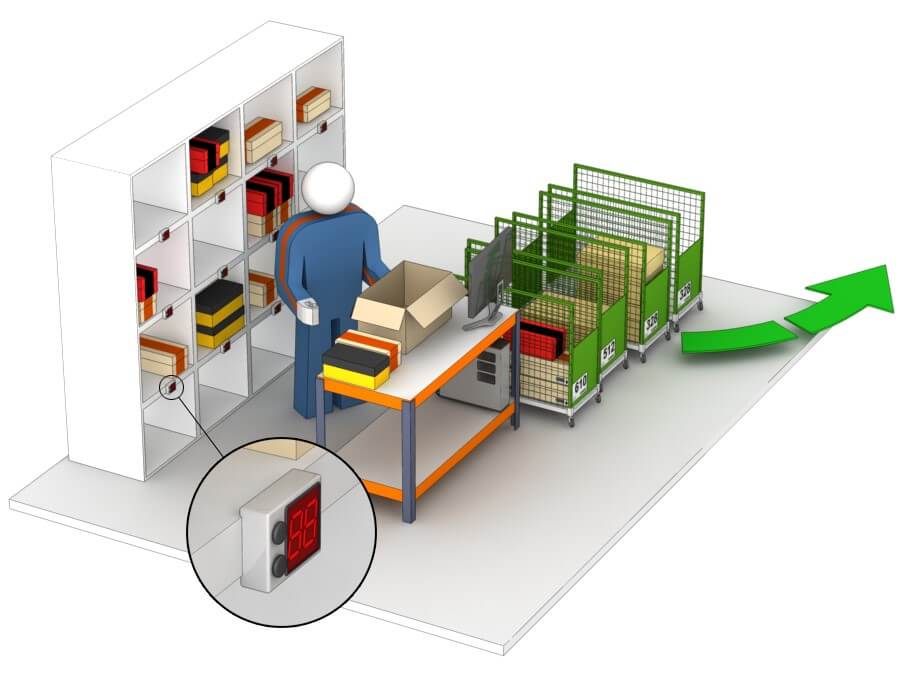10 Small Business Shipping Tips to Grow in 2024

Navigating the complexities of shipping can be a daunting task for small businesses looking to expand in 2024. With customer expectations on the rise and the competitive landscape more challenging than ever, mastering the art of efficient and cost-effective shipping is crucial. This blog will explore 10 essential shipping tips designed to help small businesses not only survive but thrive in the coming year. From optimizing packaging to leveraging technology and everything in between, these strategies are tailored to boost operational efficiency, enhance customer satisfaction, and drive growth. Before diving into the shipping tips for small businesses, let's start with how to start shipping products for small businesses.
How to start shipping for small businesses?
Starting shipping operations for a small business involves a series of strategic steps designed to ensure efficiency, cost-effectiveness, and customer satisfaction. Here’s a detailed guide on how to get started:
- Understand Your Shipping Needs
Evaluate the types of products you will be shipping, considering their size, weight, and fragility. This will help you determine the most suitable packaging and shipping methods.
- Research Shipping Carriers
Compare shipping carriers based on rates, delivery speeds, reliability, and service areas. Major carriers like USPS, FedEx, and UPS offer different plans tailored to small businesses.
- Negotiate Shipping Rates
Don’t accept listed rates as final. Contact carrier representatives to discuss and finalize the cheapest shipping for small business needs and negotiate better deals based on your estimated shipping volume.
- Select Packaging Wisely
Choose packaging that protects your products while minimizing weight. Consider branded packaging to enhance the unboxing experience and support your marketing efforts.
- Decide on Shipping Costs for Customers
Determine how you’ll charge for shipping: free shipping, flat-rate, or calculated at checkout based on weight and destination. Consider how shipping costs will impact your pricing strategy and competitiveness.
- Set Up a Shipping Station
Designate a specific area in your business space for packing orders. Equip it with necessary small business shipping supplies like boxes, bubble wrap, tape, shipping labels, and a scale.
- Implement Shipping Software
Use shipping software to streamline operations. These platforms can integrate with your sales channels, automatically generate shipping labels, and update customers with tracking information.
- Create a Clear Shipping Policy
Draft a transparent shipping policy detailing shipping options for small businesses, costs, processing times, and return procedures. Post this information clearly on your website to set the right expectations with customers.
- Plan for International Shipping (Optional)
If you plan to ship internationally, familiarize yourself with customs regulations, international shipping rates, and necessary documentation to ensure a smooth process.
- Monitor and Adjust Your Strategy
Regularly review your shipping process for cost efficiency, delivery speed, and customer satisfaction. Be prepared to adjust your strategy based on feedback and changing business needs.
10 Small Business Shipping Tips
Here are the 10 small business shipping tips:
Leverage Bulk Shipping Discounts

Securing bulk shipping discounts can be a trendsetter for small businesses aiming to reduce costs while efficiently managing their logistics. Here’s how you can capitalize on this strategy:
- Build Relationships with Carriers: Establishing a strong rapport with your shipping carriers can open up negotiations for discounted rates.
- Consolidate Shipments: Whenever possible, consolidate your shipments. Sending larger batches less frequently can qualify you for bulk rates, reducing per-item shipping costs.
- Utilize Shipping Platforms: Many third-party shipping platforms negotiate bulk rates with carriers due to their large aggregate volume.
- Join Business Groups: Some business associations and groups have partnerships with carriers that offer discounted shipping rates to their members. Joining these can provide instant access to bulk shipping discounts.
Research Shipping Carriers

Exploring your options among shipping carriers is like setting out on a quest to find the best travel companion for your products. It's a journey that demands attention to detail and a keen sense of your business's unique requirements. Begin by charting the terrain:
- Coverage Area: Assess the geographic reach of each carrier. Whether you're sending packages across town or oceans, ensure they can reliably reach your customers.
- Cost-Effectiveness: Dive into the pricing structures. Beyond just the headline rates, look for hidden fees or discounts for volume that could sway your decision.
- Speed of Delivery: Time is of the essence in ecommerce. Compare delivery speeds to promise your customers a swift receipt of their purchases without breaking the bank.
- Reliability: Seek out reviews and testimonials. A carrier's reputation for reliability can be the lynchpin in your decision, as consistent delivery builds customer trust.
Start your 14-day free trial now.
Utilize Multi-Carrier Shipping Software

Utilizing multi-carrier shipping software is a game-changer for small businesses aiming to optimize their shipping operations. Here's why it's a tip worth considering:
- Cost Savings: The software compares rates across different carriers in real time, ensuring you always get the best deal.
- Efficiency Boost: Automate the selection of shipping carriers based on cost, delivery speed, or specific service requirements, streamlining your shipping process.
- Enhanced Flexibility: Access to multiple carriers allows you to choose the most appropriate shipping option for each package, improving customer satisfaction with tailored delivery services.
Offer Multiple Shipping Options

Offering multiple shipping options can significantly enhance your small business's appeal by catering to the diverse needs and preferences of your customers. Here's why it's a game-changer:
- Customer Empowerment: Let customers choose how quickly they receive their orders, from cost-effective standard shipping to premium expedited services.
- Flexibility: Adapt to varying customer expectations around delivery times, especially during peak seasons or for last-minute purchases.
- Competitive Edge: Stand out in a crowded marketplace by accommodating different budgets and urgencies.
- Increased Satisfaction: By providing choice, you directly contribute to a positive shopping experience, encouraging repeat business and positive reviews.
Implement a Shipping Insurance Strategy

Implementing a shipping insurance strategy is a smart move for any small business looking to safeguard its shipments. Here's why it's valuable:
- Protection Against Loss or Damage: Shipping insurance covers the cost if your products are lost, stolen, or damaged in transit, ensuring financial protection.
- Enhances Customer Trust: Offering insured shipping demonstrates commitment to customer satisfaction, building trust and loyalty.
- Cost-Effective Peace of Mind: For a relatively low cost, you can avoid potentially significant losses, making it a prudent investment in your business's operational security.
- Customizable Coverage: Tailor your shipping insurance to match the value and nature of your products, ensuring adequate protection for high-value shipments.
Streamline Returns Process
Streamlining the returns process is vital for small businesses aiming to enhance customer satisfaction and loyalty. Here's how to make it both efficient and customer-friendly:
- Clear Returns Policy: Establish and communicate a straightforward returns policy that is easy for customers to understand and follow.
- Simple Steps: Minimize the steps required for a customer to initiate a return, such as offering online forms or pre-filled documents.
- Return Labels: Provide prepaid return labels to simplify the process for customers, showing that you value their convenience.
- Feedback Opportunity: Use the returns process as a chance to gather feedback on why items are returned, helping you improve product quality and customer experience.
- Quick Refunds or Exchanges: Ensure refunds or exchanges are processed promptly to maintain trust and reduce customer anxiety.
Monitoring and Analyze Shipping Data
It is a vital tip for any small business aiming to refine its shipping strategy. Here's why it's a game-changer:
- Uncover Patterns: By keeping a close eye on shipping data, you can identify trends, such as the most preferred shipping options or frequent delivery destinations. This knowledge enables targeted improvements.
- Optimize Costs: Analysis reveals cost-saving opportunities, whether through carrier selection, packaging adjustments, or route optimization.
- Enhance Customer Satisfaction: Understanding delivery times and pinpointing delays helps in setting realistic expectations and implementing measures to enhance timeliness.
- Drive Decision-Making: Armed with data, make informed choices on negotiating rates, exploring insurance options, or expanding shipping zones.
Communicate Clearly with Customers
Effective communication with customers is pivotal in the shipping process. Here’s why it’s crucial:
- Transparency: Be upfront about shipping costs, times, and policies. Customers appreciate knowing what to expect and are more understanding of any delays or issues when informed.
- Updates: Regularly provide shipment tracking information. This keeps customers in the loop and reduces anxiety about order status.
- Responsiveness: Quickly address shipping inquiries and concerns. A responsive service fosters trust and loyalty, making customers feel valued and supported.
Automate Shipping Processes
Automating your shipping processes can revolutionize the way your small business handles orders, turning a time-consuming task into a seamless, efficient operation. Here’s how:
- Instant Label Creation: Automatically generate shipping labels for each order, saving hours of manual work.
- Order Syncing: Link your sales channels to ensure orders are instantly reflected in your shipping system, eliminating the risk of oversights.
- Real-time Updates: Provide customers with automatic tracking information, enhancing transparency and trust.
- Streamlined Returns: Simplify the return process with pre-set guidelines, making it easier for customers and for you.
Stay Informed on Shipping Regulations
Staying informed on shipping regulations is crucial for small businesses to navigate the complex landscape of domestic and international logistics. Here’s why it’s important:
- Avoid Delays: Understanding the latest regulations helps ensure your shipments comply with current laws, reducing the risk of delays at customs or returned packages.
- Cut Costs: Being aware of regulatory changes can reveal new opportunities for cost savings, whether through tax exemptions or more favorable shipping routes.
- Expand Markets: Knowledge of international shipping regulations opens up the possibility to safely expand your market reach, tapping into new customer bases with confidence.
- Protect Your Reputation: Compliance with shipping laws not only avoids legal issues but also protects your brand’s reputation, ensuring customer trust and satisfaction.
Conclusion
Mastering shipping is essential for small businesses aiming to grow in 2024. By adopting these ten tips, from negotiating with carriers to staying informed about regulations, businesses can optimize their shipping processes for efficiency, cost-effectiveness, and customer satisfaction. Implementing these strategies will not only streamline your logistics but also strengthen your competitive edge, allowing you to meet the evolving expectations of your customers and carve out a stronger position in the market. Embrace these shipping practices to propel your small business forward in the coming year.

.png)
